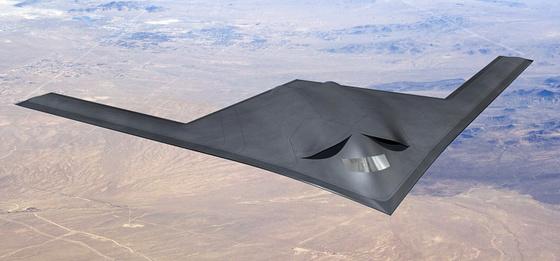
Boeing and Lockheed Martin are joining forces in the competition to build the U.S. Air Force’s new Long-Range Strike-Bomber (LRS-B), the two companies announced on Friday
Boeing will act as the prime contractor while Lockheed will be the main subcontractor.
“Boeing and Lockheed Martin are bringing together the best of the two enterprises, and the rest of industry, in support of the Long-Range Strike Bomber program, and we are honored to support our U.S. Air Force customer and this important national priority,” said Dennis Muilenburg, chief executive officer of Boeing’s defense business in a statement.
The agreement revives a previous arrangement that has been dormant since then-Defense Secretary Robert Gates cancelled the USAF’s ill-fated Next Generation Bomber (NGB) program in 2009.
However, in the January 2011, Gates revived the manned-bomber effort under the guise of the Long Range Strike family of systems, one component of which is the new bomber. While most of the details about the new bomber are classified because the entire LRS-B effort is being run as a so-called black program, the USAF has made released a few details about the effort.
The service hopes to purchase between 80 and 100 such aircraft at a unit cost of $550 million each. The aircraft — which will be optionally manned — will be built using “mature” technologies and will be designed for the long-range penetrating strike role.
The LRS-B will also have all of the wiring built-in from the outset for the nuclear strike role, however it may not initially be certified to carry those weapons. According to industry sources, the USAF’s requirements for the program look “reasonable.”
In the Fiscal Year 2013 budget, the program was funded at $300 million. During the Pentagon’s five-year budget plan ending in fiscal year 2017, the LRS-B effort was projected to receive $6.3 billion.
However, that is only a fraction of the funding needed for the new bomber to become reality, especially with the USAF’s stated goal to declare the aircraft operational by 2025.
The program is among the USAF’s three highest priorities, which also include the Boeing KC-46 aerial refueling tanker, the Lockheed Martin F-35 Lighting II Joint Strike Fighter (JSF).
The combination of Boeing and Lockheed brings together a wealth of experience for airframe design and stealth technology. The companies previously partnered on the USAF F-22 Raptor program and Boeing had also worked extensively as a subcontractor on the Northrop Grumman B-2 Sprit stealth bomber.
Northrop is the only other possible contender to build a rival LRS-B design. The company has the most recent experience with developing a long-range stealth bomber. It also has extensive experience with unmanned stealthy flying wing designs—which many industry observers believe gives it an edge in the LRS-B competition.
When the LRS-B becomes operational it will be a centerpiece of the Pentagon’s Air Sea Battle concept according to senior USAF leadership. The aircraft will penetrate deep into enemy airspace not only to hit high-value and hardened targets; it will also likely be used for penetrating intelligence, surveillance and reconnaissance. And it could even command other unmanned assets or redirect Navy or USAF cruise missiles en-route to their targets. Even stand-in jamming inside hostile airspace has been discussed as a possible mission set. Unlike the previous NGB concept, the LRS-B is going to be designed to work together with other Navy and Air Force assets, particularly when operating against an anti-access/area denial environment.





